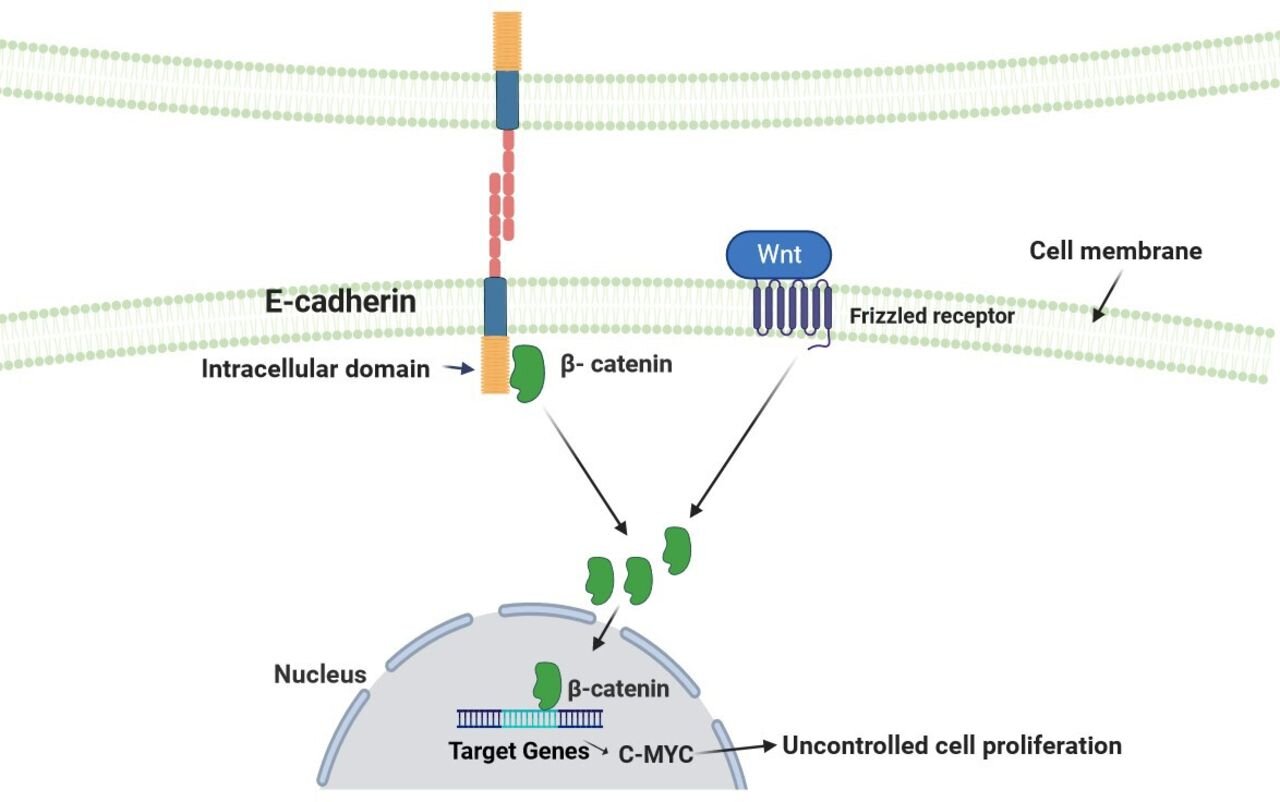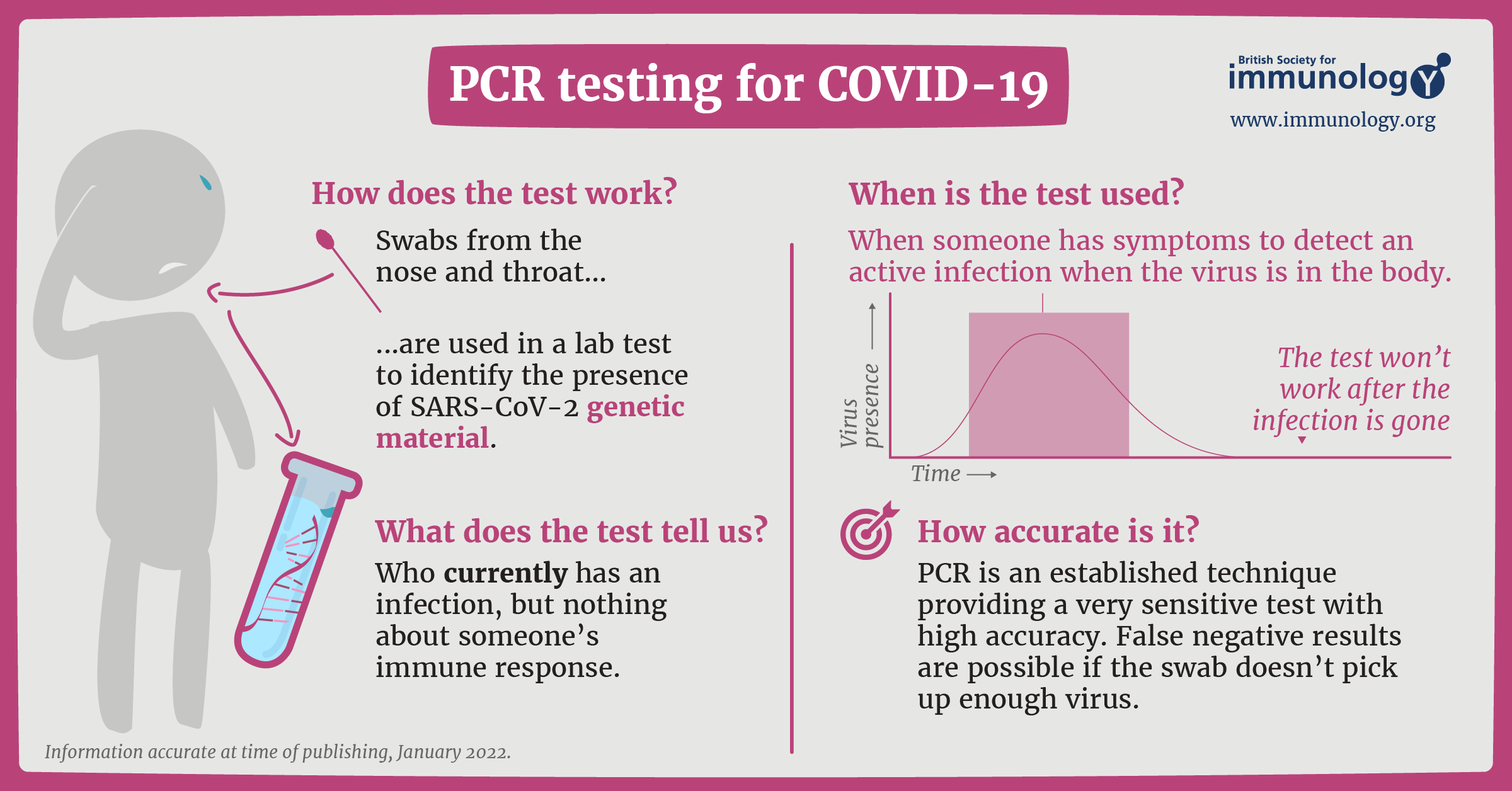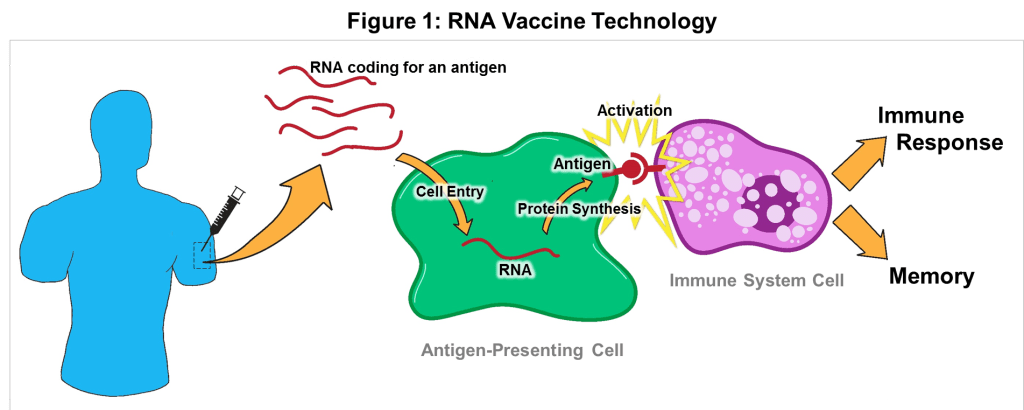How does thiopental work. The Mysteries of Sodium Thiopental: Anesthesia, Truth Serum, and Executions
What is sodium thiopental and how does it work? Discover the uses, side effects, and controversies surrounding this versatile barbiturate drug that has been employed as an anesthetic, truth serum, and lethal injection agent.
The Discovery and Properties of Sodium Thiopental
Sodium thiopental, also known as sodium pentothal, is a barbiturate drug that was first synthesized in the 1930s by Ernest H. Volwiler and Donalee L. Tabern while working at Abbott Laboratories. It was then first used in humans by Dr. Ralph M. Waters in 1934. Sodium thiopental has the chemical formula C11H17NaO2S and a molecular weight of 264.32.
How Sodium Thiopental Works as an Anesthetic
Sodium thiopental is a barbiturate that acts on the gamma-amino butyric acid (GABAa) receptor in the brain, decreasing neuronal activity. By enhancing the effects of GABA, barbiturates like sodium thiopental can produce a wide range of effects including sedation, hypnosis, and general anesthesia. However, barbiturates also carry a risk of potentially lethal overdose, which has led to their abuse and misuse over the years.

The Use of Sodium Thiopental in Psychiatry and Interrogation
In addition to its use as a general anesthetic, sodium thiopental has also been used as a so-called “truth serum” in psychiatric and interrogation settings. The drug’s ability to lower inhibitions and induce a trance-like state led to its use in trying to elicit confessions or uncover repressed memories. However, the reliability of “truth serum” interrogations has been widely disputed.
The Controversial Use of Sodium Thiopental in Lethal Injections
Sodium thiopental was formerly used as the first drug in a three-drug lethal injection cocktail for capital punishment in the United States. However, this use was discontinued after the drug’s sole US manufacturer, Hospira, stopped production and the European Union banned its export for execution purposes. The discontinuation of sodium thiopental and other drugs like pentobarbital and midazolam for lethal injections has led to botched executions in the US.
The Ethical Dilemma of Dual-Use Drugs
The case of sodium thiopental highlights the ethical dilemma surrounding “dual-use” drugs – those that have both beneficial medical applications and potentially abusive or harmful uses. As with other drugs like ketamine and fentanyl, the controversy over sodium thiopental reflects the broader challenge of regulating and controlling potentially dangerous substances that also serve important medical functions.

The Lasting Legacy and Future of Sodium Thiopental
Despite the controversies surrounding its use, sodium thiopental remains an important drug in the medical field, particularly for its utility as a short-acting general anesthetic. Its history also serves as a cautionary tale about the potential for the misuse and abuse of powerful pharmaceutical substances. As the debate over the ethics of “dual-use” drugs continues, the fate of sodium thiopental and its ilk remains uncertain.
Key Takeaways
- Sodium thiopental is a barbiturate drug first synthesized in the 1930s as a general anesthetic.
- It works by enhancing the effects of the neurotransmitter GABA, reducing neuronal activity in the brain.
- In addition to anesthesia, sodium thiopental has been used as a “truth serum” in psychiatric and interrogation settings.
- The drug was formerly used in lethal injection cocktails for capital punishment, but this use was discontinued due to ethical concerns and supply chain issues.
- The case of sodium thiopental highlights the broader challenge of regulating “dual-use” drugs with both beneficial and potentially harmful applications.
What are some other examples of “dual-use” drugs that have both medical and non-medical applications? How should the scientific community and regulatory bodies address the ethical dilemmas posed by these substances?

Sodium thiopental has a complex history marked by its use in both medical and controversial contexts. As with many powerful pharmaceutical drugs, its story serves as a cautionary tale about the need for careful oversight and regulation to ensure the responsible development and use of such substances.
Sodium thiopental – American Chemical Society
- You are here:
ACS
Molecule of the Week
Molecule of the Week Archive
Archive – S
- Sodium thiopental
Molecule of the Week Archive
January 04, 2016
Previous
Next
Use me to save lives, not cause death.
What molecule am I?
Sodium thiopental, trade name Sodium Pentothal (among others), is a general anesthetic that acts quickly but only for a short time. The preparation of this member of the barbiturate family of anesthetics was first described in 1939 in a US patent to Abbott Laboratories.
One advantage of sodium thiopental is that it can be used in surgery for pregnant mothers with no effect on the fetus. It has been a useful tool in psychiatry as a “truth serum”, which has also given it notoriety in fiction and film.
In addition to its beneficial use in medical anesthesia, sodium thiopental was formerly used as the first drug in a three-drug lethal injection series. This use was discontinued de facto when Hospira, the only US manufacturer, stopped making it, and the European Union banned exporting it for death penalty purposes.
The discontinuation of sodium pentothal for lethal injections followed the same path as that of pentobarbital and midazolam, previous Molecules of the Week. All three drugs were originally developed as anesthetics; however, after they became ingredients of lethal injection “cocktails”, governments and manufacturers denied their use for this purpose. In 2015, J. E. Stern wrote an excellent account in The Atlantic of how the absence of these drugs led to botched executions in the United States.
All three drugs were originally developed as anesthetics; however, after they became ingredients of lethal injection “cocktails”, governments and manufacturers denied their use for this purpose. In 2015, J. E. Stern wrote an excellent account in The Atlantic of how the absence of these drugs led to botched executions in the United States.
Learn more about this molecule from CAS, the most authoritative and comprehensive source for chemical information.
Molecule of the Week needs your suggestions!
If your favorite molecule is not in our archive, please send us a message. The molecule can be notable for its current or historical importance or for any quirky reason. Thank you!
Stay Ahead of the Chemistry Curve
Learn how ACS can help you stay ahead in the world of chemistry.
Find Out More
Sodium Thiopental – MOTM 2007
Sodium Thiopental – MOTM 2007
The Truth Serum |
Adriano Taylor
Kings College, Madrid, Spain
Molecule of the Month – February 2007
Also available: Chime Enhanced, JMol, and VRML versions.
Discovery
Sodium Thiopental (also called Sodium Pentothal) has the formula: C11H17NaO2S. This molecule is a trademark of Abbott Laboratories. Sodium Thiopental was discovered in the 1930s by Ernest H. Volwiler and Donalee L. Tabern while working for Abbott Laboratories. Dr. Ralph M. Waters first used it in human beings on March 8, 1934. The investigation centred on its properties, which were discovered to be short-term anesthesia, but surprisingly little analgesia. Its IUPAC name is Sodium 5-ethyl-6-oxo-5-pentan-2-yl-sulfanyl-pyrimidin-4-olate and it has a molecular weight of 264.32.
| Ernest Volwiler | Donalee Tabern | Ralph Waters |
How it works
Sodium thiopental is a barbiturate; these are drugs that act on the gamma-amino butyric acid (GABAa) receptor which decrease neuronal activity. Barbiturates enhance the GABAa receptors, decreasing drastically neuronal activity. It is because of this that overdoses can be lethal. In fact many famous people have died due to overdose on barbiturate-based drugs: e.g. Elvis Presley, Marilyn Monroe, Jimmy Hendrix, and others. The A.U.M., the Japanese terrorist group that in 1995 released sarin nerve gas in the Tokyo subway, is reported to use sodium thiopental on their members to keep them loyal. It is believed that their chief chemist produced 1.7 kg of sodium thiopental.
Barbiturates enhance the GABAa receptors, decreasing drastically neuronal activity. It is because of this that overdoses can be lethal. In fact many famous people have died due to overdose on barbiturate-based drugs: e.g. Elvis Presley, Marilyn Monroe, Jimmy Hendrix, and others. The A.U.M., the Japanese terrorist group that in 1995 released sarin nerve gas in the Tokyo subway, is reported to use sodium thiopental on their members to keep them loyal. It is believed that their chief chemist produced 1.7 kg of sodium thiopental.
The ‘Truth Serum’…
Sodium thiopental is very well known to moviegoers as the “truth serum”. Movies such as Stormbreaker, Meet the Fockers, Kill Bill vol.2, are recent examples of Hollywood’s poetic license when it comes to the use of this ‘truth serum’. However, sodium thiopental was used by the CIA for many years, and was recently used against Al-Qaeda members to find out secrets within the organization. As mentioned above, it isn’t actually a ‘truth serum’ as such, but it reduces neuronal activity making it harder and harder to think. Using the fact that it is harder for the brain to tell a lie than to tell the truth, sodium thiopental makes the subject dreamily blurt out the truth. But it does not work on people who truly believe in their lies, and therefore is not a reliable source of information.
Using the fact that it is harder for the brain to tell a lie than to tell the truth, sodium thiopental makes the subject dreamily blurt out the truth. But it does not work on people who truly believe in their lies, and therefore is not a reliable source of information.
…and Anaesthetic
This drug is also used in the induction phase of general anaesthesia, this is because of how quickly it takes effect. It usually takes less than 30 seconds for the drug to reach the brain and cause unconsciousness. It is not used for prolonged anaesthesia due to the excessive amount of time it takes for the patient to regain consciousness after induction. Instead, inhaled agents are used so that moments after the inhaled agent is removed, the patient regains consciousness.
Sodium thiopental is used in several countries for capital punishment. For example, it is used in 34 states of the U.S.A. as one of the contents of the three syringes used in ‘death by lethal injection’. During the process, the criminal is given a mega dose of sodium thiopental which very rapidly places him in a coma. The other two syringes usually contain pancuronium bromide and potassium chloride, which kill the comatose criminal in a humane way in around 10 minutes. It is said that the barbiturate alone would kill the criminal in approximately 45 minutes. In Holland they use sodium thiopental for their euthanasia program, because it induces the patient into a coma so he does not feel any pain.
During the process, the criminal is given a mega dose of sodium thiopental which very rapidly places him in a coma. The other two syringes usually contain pancuronium bromide and potassium chloride, which kill the comatose criminal in a humane way in around 10 minutes. It is said that the barbiturate alone would kill the criminal in approximately 45 minutes. In Holland they use sodium thiopental for their euthanasia program, because it induces the patient into a coma so he does not feel any pain.
Bibliography
- http://www.eipico.com.eg/PRODUCT.ASP?id1=1&id2=1%20&id4=1
- http://www.wikipedia.org
- Chemistry on the Screen
Back to Molecule of the Month page. [DOI:10.6084/m9.figshare.5427220]
Thiopental: instruction, price, analogues | lyophilisate for solution for injection Kievmedpreparat
pharmacodynamics. Sodium thiopental is a non-inhalation anesthetic. Under the action of the drug, the period of opening of GABA-dependent channels on the postsynaptic membranes of brain neurons, the time of entry of chloride ions into neurons, and membrane hyperpolarization occur. Reduces the severity of the exciting action of amino acids (aspartate and glutamate). In high doses, directly activating GABA receptors, it has a GABAergic effect. It has anticonvulsant activity, increasing the excitability threshold of neurons and blocking the conduction and propagation of convulsive impulses in the brain. Promotes muscle relaxation, inhibiting polysynaptic reflexes, and slows down conduction through the intercalary neurons of the spinal cord. Slows down metabolic processes in the brain, reduces the utilization of glucose and oxygen by the brain. It has a hypnotic effect, which manifests itself in accelerating the process of falling asleep and changing the structure of sleep. It depresses the respiratory center and reduces its sensitivity to carbon dioxide. It has a cardiodepressive effect: it reduces stroke volume, cardiac output and lowers blood pressure. Increases the capacity of the venous system, reduces hepatic blood flow and glomerular filtration rate.
Promotes muscle relaxation, inhibiting polysynaptic reflexes, and slows down conduction through the intercalary neurons of the spinal cord. Slows down metabolic processes in the brain, reduces the utilization of glucose and oxygen by the brain. It has a hypnotic effect, which manifests itself in accelerating the process of falling asleep and changing the structure of sleep. It depresses the respiratory center and reduces its sensitivity to carbon dioxide. It has a cardiodepressive effect: it reduces stroke volume, cardiac output and lowers blood pressure. Increases the capacity of the venous system, reduces hepatic blood flow and glomerular filtration rate.
Pharmacokinetics. When administered intravenously, it rapidly penetrates into the brain, skeletal muscles, kidneys, liver and adipose tissue. In fat depots, the concentration of the drug is 6–12 times higher than in blood plasma. 80-86% of the drug binds to plasma proteins. Penetrates through the placental barrier and excreted in breast milk. It is biotransformed mainly in the liver with the formation of inactive metabolites, a small part is inactivated in the kidneys and brain. T ½ is 10-12 hours. It is excreted mainly in the urine. With the correct dosage of the drug, the period of induction into anesthesia is easy and fast – within 40 seconds. The surgical depth of anesthesia is characterized by deterioration or disappearance of tendon and corneal reflexes, slight miosis (or normal pupil size), immobility or floating movements of the eyeballs, relaxation of the pharyngeal muscles with tongue retraction, a decrease in the depth of breathing and a decrease in blood pressure. The duration of anesthesia after intravenous administration of the drug is an average of 20 minutes. Upon recovery from anesthesia, the analgesic effect of sodium thiopental ceases with the awakening of the patient. It has the ability to cumulate with repeated injections.
It is biotransformed mainly in the liver with the formation of inactive metabolites, a small part is inactivated in the kidneys and brain. T ½ is 10-12 hours. It is excreted mainly in the urine. With the correct dosage of the drug, the period of induction into anesthesia is easy and fast – within 40 seconds. The surgical depth of anesthesia is characterized by deterioration or disappearance of tendon and corneal reflexes, slight miosis (or normal pupil size), immobility or floating movements of the eyeballs, relaxation of the pharyngeal muscles with tongue retraction, a decrease in the depth of breathing and a decrease in blood pressure. The duration of anesthesia after intravenous administration of the drug is an average of 20 minutes. Upon recovery from anesthesia, the analgesic effect of sodium thiopental ceases with the awakening of the patient. It has the ability to cumulate with repeated injections.
induction anesthesia.
As an additional agent for basic anesthesia (followed by the use of analgesics and muscle relaxants).
As an additional remedy for the relief of convulsive conditions of various etiologies, including those caused by the use of local anesthesia agents.
To reduce intracranial pressure in patients with increased intracranial pressure during mechanical ventilation.
Thiopental can only be used in a hospital setting.
Exclusively for IV administration, slow!
Before administration, it is necessary to carry out skin tests for individual sensitivity to the drug in the absence of contraindications to their conduct.
IV injection
Prepare solution only immediately before use with sterile water for injection. Solutions must be absolutely transparent.
Do not administer a cloudy solution or a solution with incompletely dissolved contents of the vial. Thiopental is used in the form of a solution of 25 mg / ml. In some cases, Thiopental can be used in the form of a solution of 50 mg / ml.
Anesthesia use
The dose of the drug is always determined by the effect, therefore the data below is used only as a general guide. In general, the required dose is proportional to the body weight of the patient.
In general, the required dose is proportional to the body weight of the patient.
For induction of anesthesia, as a rule, a dose of 100-150 mg of Thiopental is used, which is injected slowly over 10-15 seconds. If necessary, it is possible to re-administer a dose of 100-150 mg after 1 minute.
The dose of the drug should be carefully adjusted depending on the response of the patient to minimize the risk of respiratory depression or the possibility of overdose, while taking into account factors such as the age, sex and body weight of the patient. Sodium thiopental reaches an effective concentration in brain tissue within 30 seconds, and anesthesia usually occurs within 1 minute after IV administration.
Adults . The average dose for an adult weighing 70 kg is 200–300 mg (8–12 ml of 25 mg/ml solution), the maximum dose is 500 mg.
Children. The average dose of Thiopental 25 mg/ml solution is 2–7 mg/kg of body weight, administered intravenously slowly over 10–15 seconds. If necessary, it is possible to re-administer a dose of 2-7 mg / kg of body weight after 1 min. The dose of the drug should be carefully adjusted depending on the response of the patient. The maximum dose of Thiopental should not exceed 7 mg/kg.
If necessary, it is possible to re-administer a dose of 2-7 mg / kg of body weight after 1 min. The dose of the drug should be carefully adjusted depending on the response of the patient. The maximum dose of Thiopental should not exceed 7 mg/kg.
Elderly patients . Low doses for adults are recommended.
Use for the relief of convulsive conditions . The average dose is 75–125 mg (3–5 ml of 25 mg/ml solution). The drug should be administered as soon as possible after the onset of seizures. Re-introduction of the drug may be required in order to relieve convulsive conditions caused by the use of local anesthetics.
Other regimens such as intravenous or rectal diazepam may also be used to manage seizures.
Use in neurological patients to reduce intracranial pressure . Intermittent bolus injections of the drug at a dose of 1.5–3 mg/kg of body weight are used to reduce elevated intracranial pressure during mechanical ventilation.
hypersensitivity to sodium thiopental and / or other barbiturates, attacks of acute intermittent porphyria (in the patient’s history or in his close relatives), exacerbation of BA, acute circulatory disorders, Addison’s disease, collapse, terminal stage of shock, feverish conditions.
Caution should be exercised in patients with severe cardiovascular disease, severe bronchopulmonary disease and hypertension of various etiologies.
Barbiturates are contraindicated in cases of shortness of breath or airway obstruction, such as acute severe asthma, or when airway management cannot be guaranteed.
Coughing and sneezing may occur during thiopental induction, as with any barbiturate.
From the side of the immune system : allergic reactions, including skin rashes, urticaria, itching, Quincke’s edema, skin flushing, chills, anaphylactic shock. There is information regarding the development of hemolytic anemia and renal failure associated with an increase in the amount of antibodies to thiopental.
From the digestive system: hypersalivation, nausea, vomiting.
From the side of metabolism and nutrition : possible anorexia, hypo- and / or hyperkalemia.
From the side of the central and peripheral nervous system : muscle hypertonicity, drowsiness, headache, confusion, amnesia, dizziness.
Psychiatric disorders : Possible delirium in elderly patients.
From the respiratory system : respiratory depression or cessation, laryngospasm, bronchospasm.
From the side of the cardiovascular system : arterial hypotension, tachycardia, arrhythmia, heart failure, decreased myocardial contractility.
Other : malaise, fatigue.
Local reactions : in case of extravasation with barbiturates (penetration of the drug into the surrounding soft tissues when administered intravenously), there is a risk of necrosis and severe pain. With the introduction of 5% solution, the development of thrombophlebitis is possible. In case of accidental intravenous administration of sodium thiopental, severe arterial spasm and intense burning pain around the injection site develop (see SPECIAL INSTRUCTIONS).
In case of accidental intravenous administration of sodium thiopental, severe arterial spasm and intense burning pain around the injection site develop (see SPECIAL INSTRUCTIONS).
it should be taken into account that the achievement and maintenance of anesthesia of the required depth and duration depend both on the amount of the drug and on the patient’s individual sensitivity to it. It should be borne in mind that the drug causes cardiodepression: it reduces stroke volume, cardiac output and blood pressure. In order to prevent a reaction associated with an increase in the tone of the vagus nerve, the patient should be premedicated with atropine or metacin before anesthesia.
It is recommended to use sodium thiopental with caution in violation of the contractile function of the myocardium.
Sodium thiopental is not recommended as the sole anesthetic for intubation anesthesia because of the risk of laryngeal spasm and cough. Sodium thiopental causes respiratory depression in patients with cardiovascular diseases, the use of sodium thiopental can lead to acute circulatory failure.
The use of sodium thiopental with extreme caution is recommended in patients with: hypovolemia, severe bleeding, burns, cardiovascular disease, myasthenia gravis, adrenal insufficiency (even with cortisone control), cachexia, increased intracranial pressure, elevated urea.
Reduce the dose in shock, dehydration, severe anemia, hyperkalemia, toxemia, thyrotoxicosis, myxedema and diabetes.
Use in hepatic and renal insufficiency. Sodium thiopental is metabolized primarily in the liver, so dose reduction is necessary in patients with hepatic impairment.
Barbiturates should be used with caution in severe renal impairment. Dose reduction is also necessary when using the drug in the elderly and in patients in whom narcotic analgesics were used for premedication.
For patients on long-term use of drugs such as acetylsalicylic acid, oral anticoagulants, MAO inhibitors and lithium preparations, dose adjustment or discontinuation of therapy with the above drugs before elective surgery is necessary.
Patients with diabetes mellitus or hypertension need to adjust the doses of basic therapy before anesthesia.
Dose increase. Dose escalation is necessary for patients who have a history of addiction or dependence on alcohol or drugs. In such cases, additional use of analgesics is recommended.
Extravasation. The manifestation of extravasation is recommended to stop cold or local injection of hydrocortisone.
Random i/a injection . In case of accidental intravenous administration of sodium thiopental, the needle must be left in place for the administration of antispasmodic drugs such as papaverine or prilocaine hydrochloride. In such cases, it is also recommended to use anticoagulant therapy in order to reduce the risk of thrombosis.
Use in neurological patients with increased intracranial pressure. There are risks of refractory hypokalemia during and after discontinuation of the sodium thiopental infusion, these risks should be taken into account after completion of the sodium thiopental infusion.
Sodium thiopental contains sodium (up to 59 mg in 0.5 g vials and up to 118 mg in 1.0 g vials). This fact must be taken into account in patients who are on a hyponatric diet.
Use during pregnancy and lactation. Sodium thiopental readily crosses the placental barrier and is also found in breast milk. Therefore, breastfeeding should be temporarily suspended or breast milk should be expressed before induction of anesthesia. It has been proven that sodium thiopental can be used without adverse reactions during pregnancy, but the total dose should not exceed 250 mg. Thiopental during pregnancy can be prescribed only if the expected benefit outweighs the potential risk.
Children. The drug is used from the first days of life (see APPLICATION).
Ability to influence reaction rate when driving vehicles or working with other mechanisms . Postoperative dizziness, disorientation and sedation may occur for a long time after the use of Thiopental, so you should refrain from driving vehicles or doing work that requires increased attention and speed of psychomotor reactions, especially in the first 24-36 hours after using the drug.
Thiopental increases the effect of antihypertensive and hypothermic agents. The drug potentiates the inhibitory effect on the central nervous system of sedatives and hypnotics, ketamine, neuroleptics, magnesium sulfate, ethanol. The activity of the drug is increased by blockers H 1 -adrenergic receptors and probenecid; decreases – analeptics and some antidepressants, aminophylline. So, Thiopental should be used with caution with the above-mentioned drugs.
Co-administration of sodium thiopental with sulfafurazole is indicated to reduce the initial dose and, if necessary, to maintain anesthesia with repeated doses.
Concomitant use of general anesthetics with drugs such as β-adrenergic blockers and calcium channel blockers, ACE inhibitors, α-adrenergic receptor blockers, angiotensin II antagonists, phenothiazine, diazoxide, diuretics, methyldopa, moxonidine, nitrates, peripheral vasodilators ( hydralazine, minoxidil, nitroprusside) may potentiate their hypotensive effect.
Analgesics . There is evidence of an increase in the activity of sodium thiopental with previous use of acetylsalicylic acid. Due to the possibility of respiratory depression, sodium thiopental should be used with caution in combination with narcotic analgesics. Sodium thiopental may reduce the analgesic effect of pethidine.
Antibacterial drugs. There is evidence that general anesthetics may increase the hepatotoxicity of isoniazid, sensitization and adverse reactions may also occur with the simultaneous use of sodium thiopental and the administration of vancomycin.
Antidepressants . With simultaneous use with tricyclic antidepressants, the risk of arrhythmias and arterial hypotension increases. With the simultaneous use of sodium thiopental with MAO inhibitors, there is a risk of developing arterial hypotension and hypertension.
Antipsychotics . Sodium thiopental may enhance the sedative properties of some phenothiazines, especially promethazine.
Benzodiazepines . Midazolam potentiates the anesthetic effect of sodium thiopental.
If sodium thiopental is co-administered with metoclopramide and droperidol, the dose of sodium thiopental should be reduced.
Concomitant use of other CNS depressant drugs for sedation may cause synergism of their action, so in some cases it is necessary to use drugs for general anesthesia in lower doses.
Bradycardia has been reported with induction of anesthesia with sodium thiopental in combination with fentanyl.
Incompatible . Solution of Thiopental should not be mixed in the same syringe with antibiotics (amikacin, benzylpenicillin, cefapirin), tranquilizers, muscle relaxants (suxamethonium, tubocurarine), analgesics, ephedrine, ascorbic acid, dipyridamole, chlorpromazine, ketamine, pethidine, morphine, promethazine, and acids and acid salts.
in case of overdose, respiratory depression up to apnea, laryngospasm, arterial hypotension, tachycardia, cardiac arrest, pulmonary edema are noted; postanesthetic delirium.
Treatment : Bemegride, which is a specific antagonist, is administered. When breathing stops, mechanical ventilation is used, inhalation of 100% oxygen; with laryngospasm – muscle relaxants and inhalation of 100% oxygen under pressure; with arterial hypotension – infusion of plasma-substituting solutions, hypertensive drugs.
in original packaging at a temperature not exceeding 25 °C.
| Appendicular abscess (infiltrate) | ICD K35.3 |
| Disease of the appendix | ICD K38.9 |
| Dysfunctional uterine bleeding (DUB) | ICD N93.9 |
| Other specified malignant neoplasms of lymphoid, hematopoietic and related tissues | ICD C96.7 |
| Ureteral stones | ICD N20.1 |
| Acute duodenal ulcer with perforation | ICD K26. 1 1 |
| Acute appendicitis | ICD K35.8 |
| Acute cholecystitis | ICD K81.0 |
| Open wound of the nose | ICD S01.2 |
| Fracture of the upper end of the humerus | ICD S42.2 |
| Fracture of the distal tibia | ICD S82.3 |
| Penetrating wound of the eyeball with a foreign body | ICD S05.5 |
| Umbilical hernia with obstruction | ICD K42.0 |
| Synechia of the foreskin | ICD N47 |
| Combined fracture of the lower ends of the ulna and radius | ICD S52.6 |
| Thermal burns of several areas of the body, 2nd degree | ICD T29. 2 2 |
| Thermal burn 10-19% of body surface | ICD T31.1 |
| Breast fibroadenoma | ICD D24 |
| Choledochoduodenoanastomosis | ICD K80.1 |
Thiopental: instruction, price, analogues | lyophilisate for solution for injection Kievmedpreparat
- Pharmacological properties
- Indications Thiopental
- Application of Thiopental
- Contraindications
- Side effects
- Special instructions
- Interactions
- Overdose
- Storage conditions
- Diagnosis
- Recommended alternatives
- Trade names
pharmacodynamics. Sodium thiopental is a non-inhalation anesthetic. Under the action of the drug, the period of opening of GABA-dependent channels on the postsynaptic membranes of brain neurons, the time of entry of chloride ions into neurons, and membrane hyperpolarization occur. Reduces the severity of the exciting action of amino acids (aspartate and glutamate). In high doses, directly activating GABA receptors, it has a GABAergic effect. It has anticonvulsant activity, increasing the excitability threshold of neurons and blocking the conduction and propagation of convulsive impulses in the brain. Promotes muscle relaxation, inhibiting polysynaptic reflexes, and slows down conduction through the intercalary neurons of the spinal cord. Slows down metabolic processes in the brain, reduces the utilization of glucose and oxygen by the brain. It has a hypnotic effect, which manifests itself in accelerating the process of falling asleep and changing the structure of sleep. It depresses the respiratory center and reduces its sensitivity to carbon dioxide. It has a cardiodepressive effect: it reduces stroke volume, cardiac output and lowers blood pressure. Increases the capacity of the venous system, reduces hepatic blood flow and glomerular filtration rate.
Reduces the severity of the exciting action of amino acids (aspartate and glutamate). In high doses, directly activating GABA receptors, it has a GABAergic effect. It has anticonvulsant activity, increasing the excitability threshold of neurons and blocking the conduction and propagation of convulsive impulses in the brain. Promotes muscle relaxation, inhibiting polysynaptic reflexes, and slows down conduction through the intercalary neurons of the spinal cord. Slows down metabolic processes in the brain, reduces the utilization of glucose and oxygen by the brain. It has a hypnotic effect, which manifests itself in accelerating the process of falling asleep and changing the structure of sleep. It depresses the respiratory center and reduces its sensitivity to carbon dioxide. It has a cardiodepressive effect: it reduces stroke volume, cardiac output and lowers blood pressure. Increases the capacity of the venous system, reduces hepatic blood flow and glomerular filtration rate.
Pharmacokinetics. When administered intravenously, it rapidly penetrates into the brain, skeletal muscles, kidneys, liver and adipose tissue. In fat depots, the concentration of the drug is 6–12 times higher than in blood plasma. 80-86% of the drug binds to plasma proteins. Penetrates through the placental barrier and excreted in breast milk. It is biotransformed mainly in the liver with the formation of inactive metabolites, a small part is inactivated in the kidneys and brain. T ½ is 10-12 hours. It is excreted mainly in the urine. With the correct dosage of the drug, the period of induction into anesthesia is easy and fast – within 40 seconds. The surgical depth of anesthesia is characterized by deterioration or disappearance of tendon and corneal reflexes, slight miosis (or normal pupil size), immobility or floating movements of the eyeballs, relaxation of the pharyngeal muscles with tongue retraction, a decrease in the depth of breathing and a decrease in blood pressure. The duration of anesthesia after intravenous administration of the drug is an average of 20 minutes.
When administered intravenously, it rapidly penetrates into the brain, skeletal muscles, kidneys, liver and adipose tissue. In fat depots, the concentration of the drug is 6–12 times higher than in blood plasma. 80-86% of the drug binds to plasma proteins. Penetrates through the placental barrier and excreted in breast milk. It is biotransformed mainly in the liver with the formation of inactive metabolites, a small part is inactivated in the kidneys and brain. T ½ is 10-12 hours. It is excreted mainly in the urine. With the correct dosage of the drug, the period of induction into anesthesia is easy and fast – within 40 seconds. The surgical depth of anesthesia is characterized by deterioration or disappearance of tendon and corneal reflexes, slight miosis (or normal pupil size), immobility or floating movements of the eyeballs, relaxation of the pharyngeal muscles with tongue retraction, a decrease in the depth of breathing and a decrease in blood pressure. The duration of anesthesia after intravenous administration of the drug is an average of 20 minutes. Upon recovery from anesthesia, the analgesic effect of sodium thiopental ceases with the awakening of the patient. It has the ability to cumulate with repeated injections.
Upon recovery from anesthesia, the analgesic effect of sodium thiopental ceases with the awakening of the patient. It has the ability to cumulate with repeated injections.
induction anesthesia.
As an additional agent for basic anesthesia (followed by the use of analgesics and muscle relaxants).
As an additional remedy for the relief of convulsive conditions of various etiologies, including those caused by the use of local anesthesia agents.
To reduce intracranial pressure in patients with increased intracranial pressure during mechanical ventilation.
Thiopental can only be used in a hospital setting.
Exclusively for IV administration, slow!
Before administration, it is necessary to carry out skin tests for individual sensitivity to the drug in the absence of contraindications to their conduct.
IV injection
Prepare solution only immediately before use with sterile water for injection. Solutions must be absolutely transparent.
Do not administer a cloudy solution or a solution with incompletely dissolved contents of the vial. Thiopental is used in the form of a solution of 25 mg / ml. In some cases, Thiopental can be used in the form of a solution of 50 mg / ml.
Anesthesia use
The dose of the drug is always determined by the effect, therefore the data below is used only as a general guide. In general, the required dose is proportional to the body weight of the patient.
For induction of anesthesia, as a rule, a dose of 100-150 mg of Thiopental is used, which is injected slowly over 10-15 seconds. If necessary, it is possible to re-administer a dose of 100-150 mg after 1 minute.
The dose of the drug should be carefully adjusted depending on the response of the patient to minimize the risk of respiratory depression or the possibility of overdose, while taking into account factors such as the age, sex and body weight of the patient. Sodium thiopental reaches an effective concentration in brain tissue within 30 seconds, and anesthesia usually occurs within 1 minute after IV administration.
Adults . The average dose for an adult weighing 70 kg is 200–300 mg (8–12 ml of 25 mg/ml solution), the maximum dose is 500 mg.
Children. The average dose of Thiopental 25 mg/ml solution is 2–7 mg/kg of body weight, administered intravenously slowly over 10–15 seconds. If necessary, it is possible to re-administer a dose of 2-7 mg / kg of body weight after 1 min. The dose of the drug should be carefully adjusted depending on the response of the patient. The maximum dose of Thiopental should not exceed 7 mg/kg.
Elderly patients . Low doses for adults are recommended.
Use for the relief of convulsive conditions . The average dose is 75–125 mg (3–5 ml of 25 mg/ml solution). The drug should be administered as soon as possible after the onset of seizures. Re-introduction of the drug may be required in order to relieve convulsive conditions caused by the use of local anesthetics.
Other regimens such as intravenous or rectal diazepam may also be used to manage seizures.
Use in neurological patients to reduce intracranial pressure . Intermittent bolus injections of the drug at a dose of 1.5–3 mg/kg of body weight are used to reduce elevated intracranial pressure during mechanical ventilation.
hypersensitivity to sodium thiopental and / or other barbiturates, attacks of acute intermittent porphyria (in the patient’s history or in his close relatives), exacerbation of BA, acute circulatory disorders, Addison’s disease, collapse, terminal stage of shock, feverish conditions.
Caution should be exercised in patients with severe cardiovascular disease, severe bronchopulmonary disease and hypertension of various etiologies.
Barbiturates are contraindicated in cases of shortness of breath or airway obstruction, such as acute severe asthma, or when airway management cannot be guaranteed.
Coughing and sneezing may occur during thiopental induction, as with any barbiturate.
From the side of the immune system : allergic reactions, including skin rashes, urticaria, itching, Quincke’s edema, skin flushing, chills, anaphylactic shock. There is information regarding the development of hemolytic anemia and renal failure associated with an increase in the amount of antibodies to thiopental.
There is information regarding the development of hemolytic anemia and renal failure associated with an increase in the amount of antibodies to thiopental.
From the digestive system: hypersalivation, nausea, vomiting.
From the side of metabolism and nutrition : possible anorexia, hypo- and / or hyperkalemia.
From the side of the central and peripheral nervous system : muscle hypertonicity, drowsiness, headache, confusion, amnesia, dizziness.
Psychiatric disorders : Possible delirium in elderly patients.
From the respiratory system : respiratory depression or cessation, laryngospasm, bronchospasm.
From the side of the cardiovascular system : arterial hypotension, tachycardia, arrhythmia, heart failure, decreased myocardial contractility.
Other : malaise, fatigue.
Local reactions : in case of extravasation with barbiturates (penetration of the drug into the surrounding soft tissues when administered intravenously), there is a risk of necrosis and severe pain. With the introduction of 5% solution, the development of thrombophlebitis is possible. In case of accidental intravenous administration of sodium thiopental, severe arterial spasm and intense burning pain around the injection site develop (see SPECIAL INSTRUCTIONS).
With the introduction of 5% solution, the development of thrombophlebitis is possible. In case of accidental intravenous administration of sodium thiopental, severe arterial spasm and intense burning pain around the injection site develop (see SPECIAL INSTRUCTIONS).
it should be taken into account that the achievement and maintenance of anesthesia of the required depth and duration depend both on the amount of the drug and on the patient’s individual sensitivity to it. It should be borne in mind that the drug causes cardiodepression: it reduces stroke volume, cardiac output and blood pressure. In order to prevent a reaction associated with an increase in the tone of the vagus nerve, the patient should be premedicated with atropine or metacin before anesthesia.
It is recommended to use sodium thiopental with caution in violation of the contractile function of the myocardium.
Sodium thiopental is not recommended as the sole anesthetic for intubation anesthesia because of the risk of laryngeal spasm and cough. Sodium thiopental causes respiratory depression in patients with cardiovascular diseases, the use of sodium thiopental can lead to acute circulatory failure.
Sodium thiopental causes respiratory depression in patients with cardiovascular diseases, the use of sodium thiopental can lead to acute circulatory failure.
The use of sodium thiopental with extreme caution is recommended in patients with: hypovolemia, severe bleeding, burns, cardiovascular disease, myasthenia gravis, adrenal insufficiency (even with cortisone control), cachexia, increased intracranial pressure, elevated urea.
Reduce the dose in shock, dehydration, severe anemia, hyperkalemia, toxemia, thyrotoxicosis, myxedema and diabetes.
Use in hepatic and renal insufficiency. Sodium thiopental is metabolized primarily in the liver, so dose reduction is necessary in patients with hepatic impairment.
Barbiturates should be used with caution in severe renal impairment. Dose reduction is also necessary when using the drug in the elderly and in patients in whom narcotic analgesics were used for premedication.
For patients on long-term use of drugs such as acetylsalicylic acid, oral anticoagulants, MAO inhibitors and lithium preparations, dose adjustment or discontinuation of therapy with the above drugs before elective surgery is necessary.
Patients with diabetes mellitus or hypertension need to adjust the doses of basic therapy before anesthesia.
Dose increase. Dose escalation is necessary for patients who have a history of addiction or dependence on alcohol or drugs. In such cases, additional use of analgesics is recommended.
Extravasation. The manifestation of extravasation is recommended to stop cold or local injection of hydrocortisone.
Random i/a injection . In case of accidental intravenous administration of sodium thiopental, the needle must be left in place for the administration of antispasmodic drugs such as papaverine or prilocaine hydrochloride. In such cases, it is also recommended to use anticoagulant therapy in order to reduce the risk of thrombosis.
Use in neurological patients with increased intracranial pressure. There are risks of refractory hypokalemia during and after discontinuation of the sodium thiopental infusion, these risks should be taken into account after completion of the sodium thiopental infusion.
Sodium thiopental contains sodium (up to 59 mg in 0.5 g vials and up to 118 mg in 1.0 g vials). This fact must be taken into account in patients who are on a hyponatric diet.
Use during pregnancy and lactation. Sodium thiopental readily crosses the placental barrier and is also found in breast milk. Therefore, breastfeeding should be temporarily suspended or breast milk should be expressed before induction of anesthesia. It has been proven that sodium thiopental can be used without adverse reactions during pregnancy, but the total dose should not exceed 250 mg. Thiopental during pregnancy can be prescribed only if the expected benefit outweighs the potential risk.
Children. The drug is used from the first days of life (see APPLICATION).
Ability to influence reaction rate when driving vehicles or working with other mechanisms . Postoperative dizziness, disorientation and sedation may occur for a long time after the use of Thiopental, so you should refrain from driving vehicles or doing work that requires increased attention and speed of psychomotor reactions, especially in the first 24-36 hours after using the drug.
Thiopental increases the effect of antihypertensive and hypothermic agents. The drug potentiates the inhibitory effect on the central nervous system of sedatives and hypnotics, ketamine, neuroleptics, magnesium sulfate, ethanol. The activity of the drug is increased by blockers H 1 -adrenergic receptors and probenecid; decreases – analeptics and some antidepressants, aminophylline. So, Thiopental should be used with caution with the above-mentioned drugs.
Co-administration of sodium thiopental with sulfafurazole is indicated to reduce the initial dose and, if necessary, to maintain anesthesia with repeated doses.
Concomitant use of general anesthetics with drugs such as β-adrenergic blockers and calcium channel blockers, ACE inhibitors, α-adrenergic receptor blockers, angiotensin II antagonists, phenothiazine, diazoxide, diuretics, methyldopa, moxonidine, nitrates, peripheral vasodilators ( hydralazine, minoxidil, nitroprusside) may potentiate their hypotensive effect.
Analgesics . There is evidence of an increase in the activity of sodium thiopental with previous use of acetylsalicylic acid. Due to the possibility of respiratory depression, sodium thiopental should be used with caution in combination with narcotic analgesics. Sodium thiopental may reduce the analgesic effect of pethidine.
Antibacterial drugs. There is evidence that general anesthetics may increase the hepatotoxicity of isoniazid, sensitization and adverse reactions may also occur with the simultaneous use of sodium thiopental and the administration of vancomycin.
Antidepressants . With simultaneous use with tricyclic antidepressants, the risk of arrhythmias and arterial hypotension increases. With the simultaneous use of sodium thiopental with MAO inhibitors, there is a risk of developing arterial hypotension and hypertension.
Antipsychotics . Sodium thiopental may enhance the sedative properties of some phenothiazines, especially promethazine.
Benzodiazepines . Midazolam potentiates the anesthetic effect of sodium thiopental.
If sodium thiopental is co-administered with metoclopramide and droperidol, the dose of sodium thiopental should be reduced.
Concomitant use of other CNS depressant drugs for sedation may cause synergism of their action, so in some cases it is necessary to use drugs for general anesthesia in lower doses.
Bradycardia has been reported with induction of anesthesia with sodium thiopental in combination with fentanyl.
Incompatible . Solution of Thiopental should not be mixed in the same syringe with antibiotics (amikacin, benzylpenicillin, cefapirin), tranquilizers, muscle relaxants (suxamethonium, tubocurarine), analgesics, ephedrine, ascorbic acid, dipyridamole, chlorpromazine, ketamine, pethidine, morphine, promethazine, and acids and acid salts.
in case of overdose, respiratory depression up to apnea, laryngospasm, arterial hypotension, tachycardia, cardiac arrest, pulmonary edema are noted; postanesthetic delirium.
Treatment : Bemegride, which is a specific antagonist, is administered. When breathing stops, mechanical ventilation is used, inhalation of 100% oxygen; with laryngospasm – muscle relaxants and inhalation of 100% oxygen under pressure; with arterial hypotension – infusion of plasma-substituting solutions, hypertensive drugs.
in original packaging at a temperature not exceeding 25 °C.
| Appendicular abscess (infiltrate) | ICD K35.3 |
| Disease of the appendix | ICD K38.9 |
| Dysfunctional uterine bleeding (DUB) | ICD N93.9 |
| Other specified malignant neoplasms of lymphoid, hematopoietic and related tissues | ICD C96.7 |
| Ureteral stones | ICD N20.1 |
| Acute duodenal ulcer with perforation | ICD K26. 1 1 |
| Acute appendicitis | ICD K35.8 |
| Acute cholecystitis | ICD K81.0 |
| Open wound of the nose | ICD S01.2 |
| Fracture of the upper end of the humerus | ICD S42.2 |
| Fracture of the distal tibia | ICD S82.3 |
| Penetrating wound of the eyeball with a foreign body | ICD S05.5 |
| Umbilical hernia with obstruction | ICD K42.0 |
| Synechia of the foreskin | ICD N47 |
| Combined fracture of the lower ends of the ulna and radius | ICD S52.6 |
| Thermal burns of several areas of the body, 2nd degree | ICD T29. |
